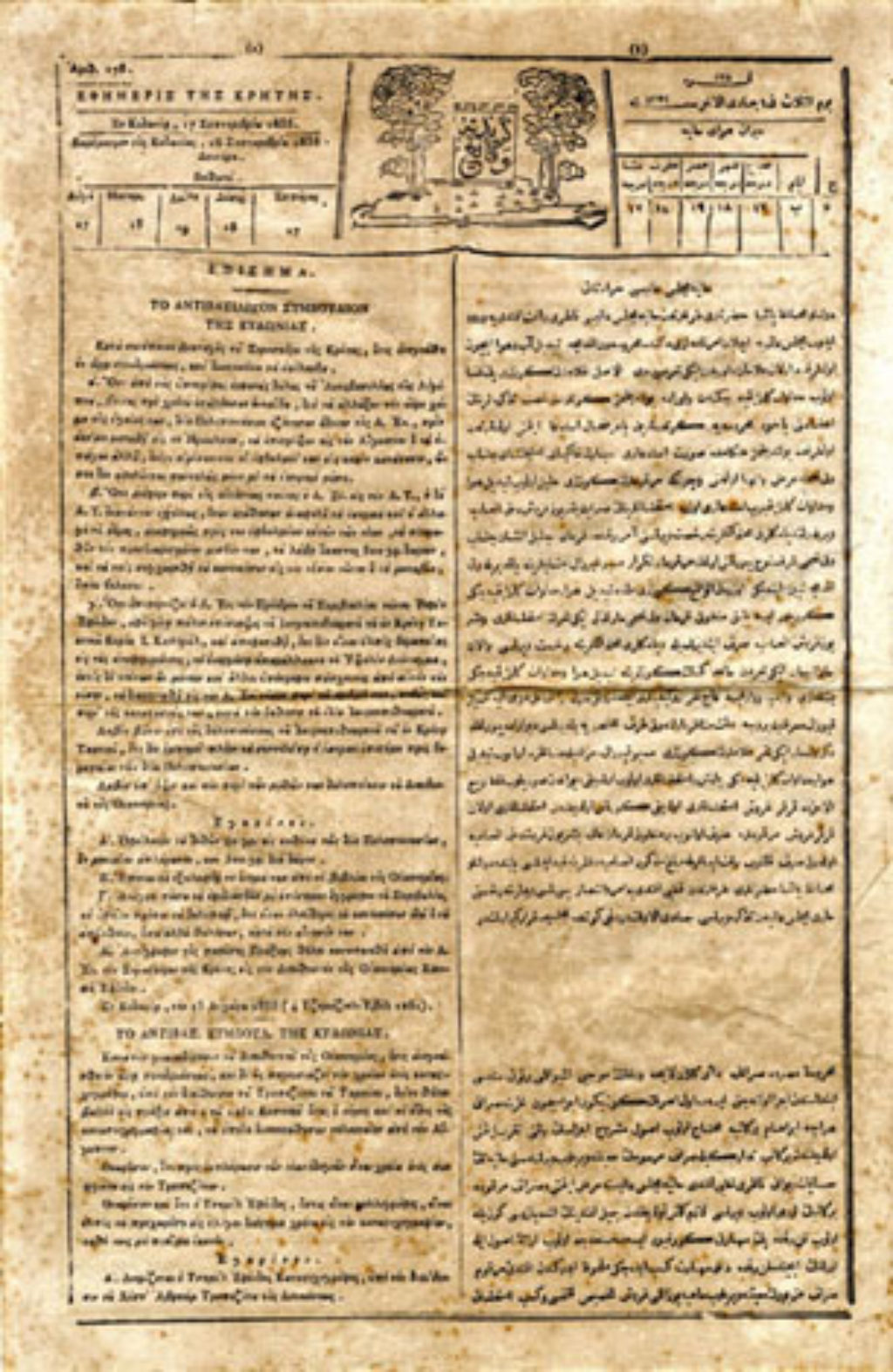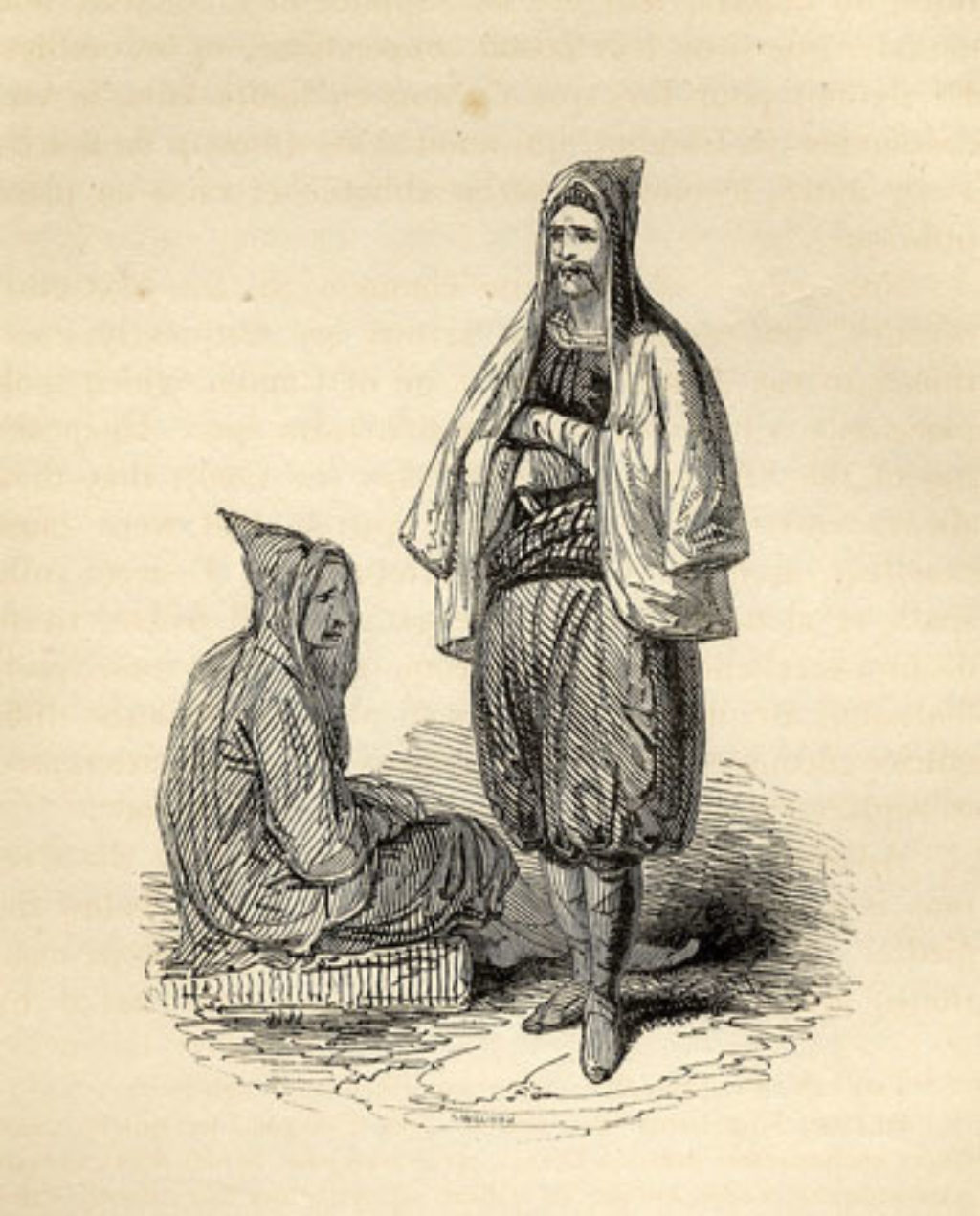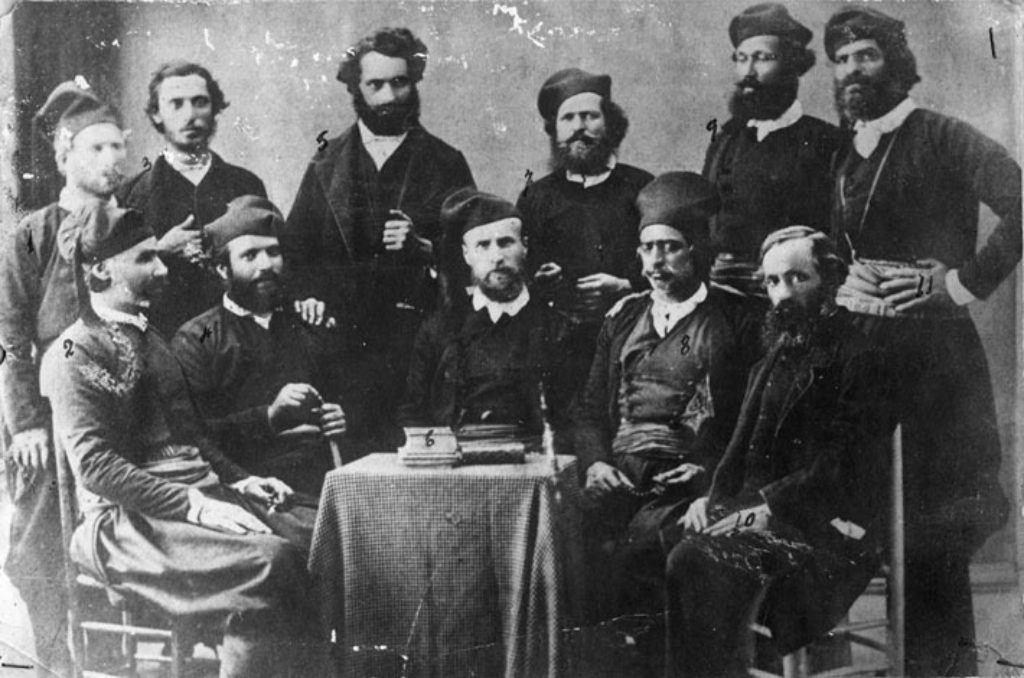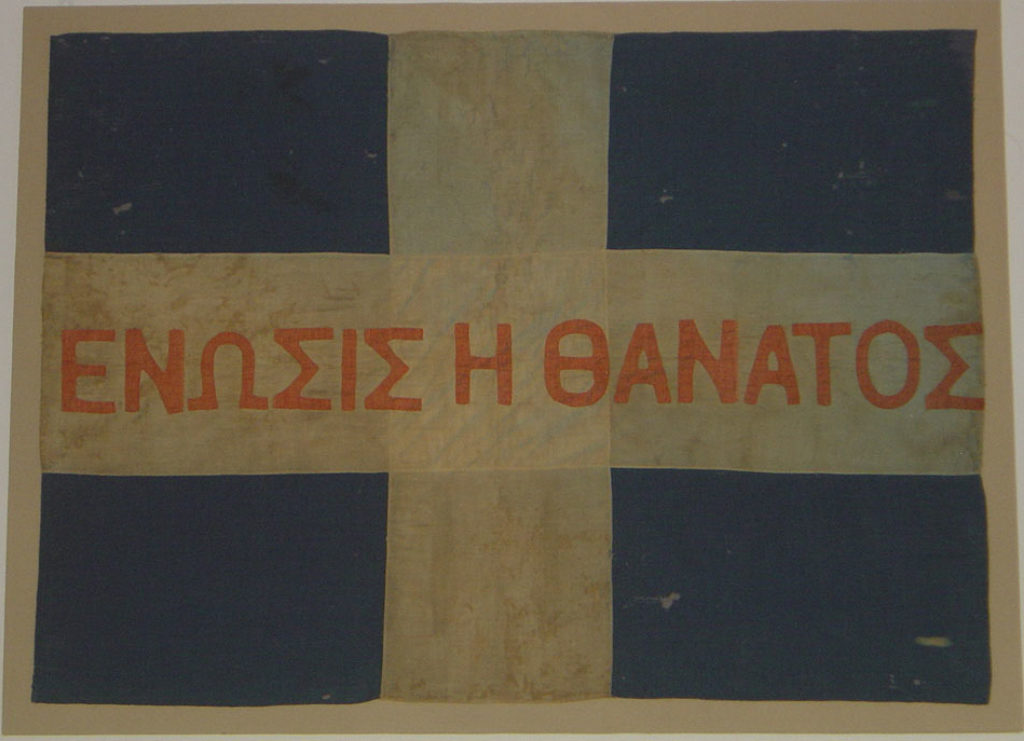CRETE AFTER 1821
The Period of Egyptian Rule in Crete
Under the London Protocol of 7 May 1832, Crete, along with the British-ruled Ionian Islands, the islands of the north and east Aegean, the Dodecanese, Thessaly, Epirus, Macedonia and Thrace, was left outside the borders of the Greek state. The period of Egyptian rule in Crete, which lasted for a total of ten years from the end of the Greek Revolution, was marked by the granting of numerous privileges to the Christian inhabitants. This was largely due to the moderate stance of the governor Mustapha Pasha, while the departure of many Muslims from the island gradually led to most of the land being concentrated in Christian hands. The Cretan Christians rose up in two rebellions during the period of Egyptian rule: the first was in September 1833, and the second, known as the “Chairetis and Vassilogiorgis Rising”, in early 1841. Both risings were quickly and easily quashed.
The Hatt-i Hümayun
The Hatt-i Hümayun
After the end of the Crimean War (1853-1856) and following the intervention of the Great Powers, the Sublime Porte was forced to take measures to ensure the equality before the law and safety of all its subjects, to grant privileges to Christians throughout the Empire which largely eradicated the inequalities between Christians and Muslims, and to recognise the right of freedom of religion, among other human rights for all its subjects. The Hatt-i Hümayun, or Imperial Rescript, was a reform decree issued on 18 February 1856, accompanied by more specific firmans (official decrees). The implementation of these firmans encountered many obstacles, leading to fresh tensions in Crete in the 1860s.
The 1866-1869 Rising
The 1866-1869 Rising
The insurrection launched in August 1866 was intended to overthrow Ottoman rule and unify Crete with Greece. It lasted three full years, resulting in heavy losses among the local population and new waves of refugees leaving the island. This rising differed from the previous ones in that it enjoyed the support of the “Central Committee of Cretans” in Athens and the (covert) support of the Greek state. It was joined by many volunteers from Greece and abroad, while the blowing up of the Arkadi Monastery in Rethymnon on 9th November 1866, when the powder magazine was deliberately set alight by the defenders, came to be seen as the ultimate symbolic event of the rising. Although the aim of unification with Greece was not achieved, the rising won the sympathy of public opinion at home and abroad.
The Definitive Solution of the Cretan Question
The Definitive Solution of the Cretan Question
An important step towards the solution of the Cretan Question was the signing of the Treaty of Chalepa in October 1878, with the support and guidance of the Great Powers. Under the Treaty, Crete became semi-autonomous, with Christians gaining greater rights of participation in government, and Greek established alongside Turkish as the official administrative language of the island. In essence, Crete was partially cut off from the administrative machinery of the Ottoman Empire. The events of the following decades led to the establishment of the Cretan State in July 1898. This distancing from the Ottoman world led to the mass flight of a significant proportion of the Muslim population. With the Treaty of London in 1913, Crete was unified with the Greek state and the Cretan Question was definitively resolved.





